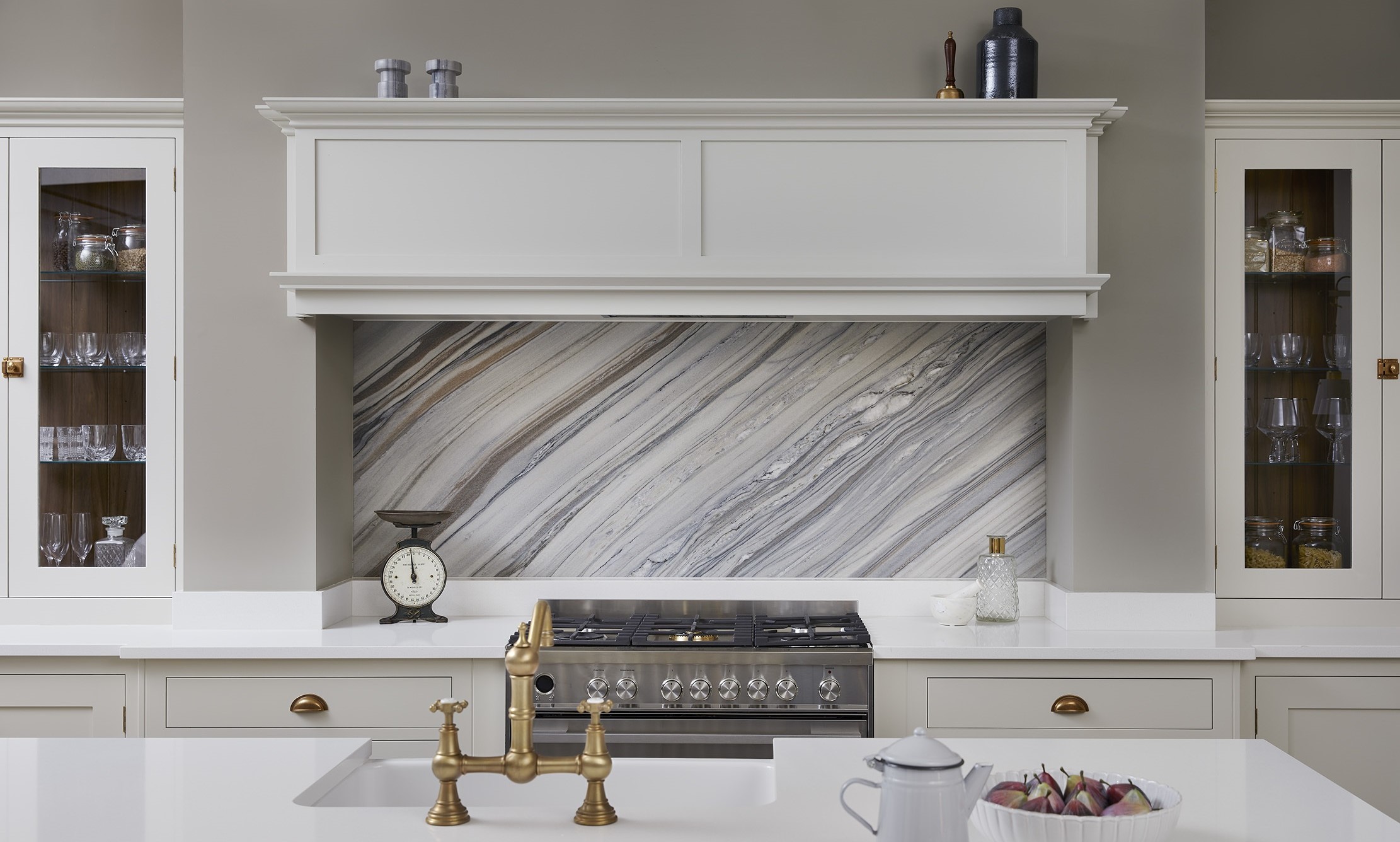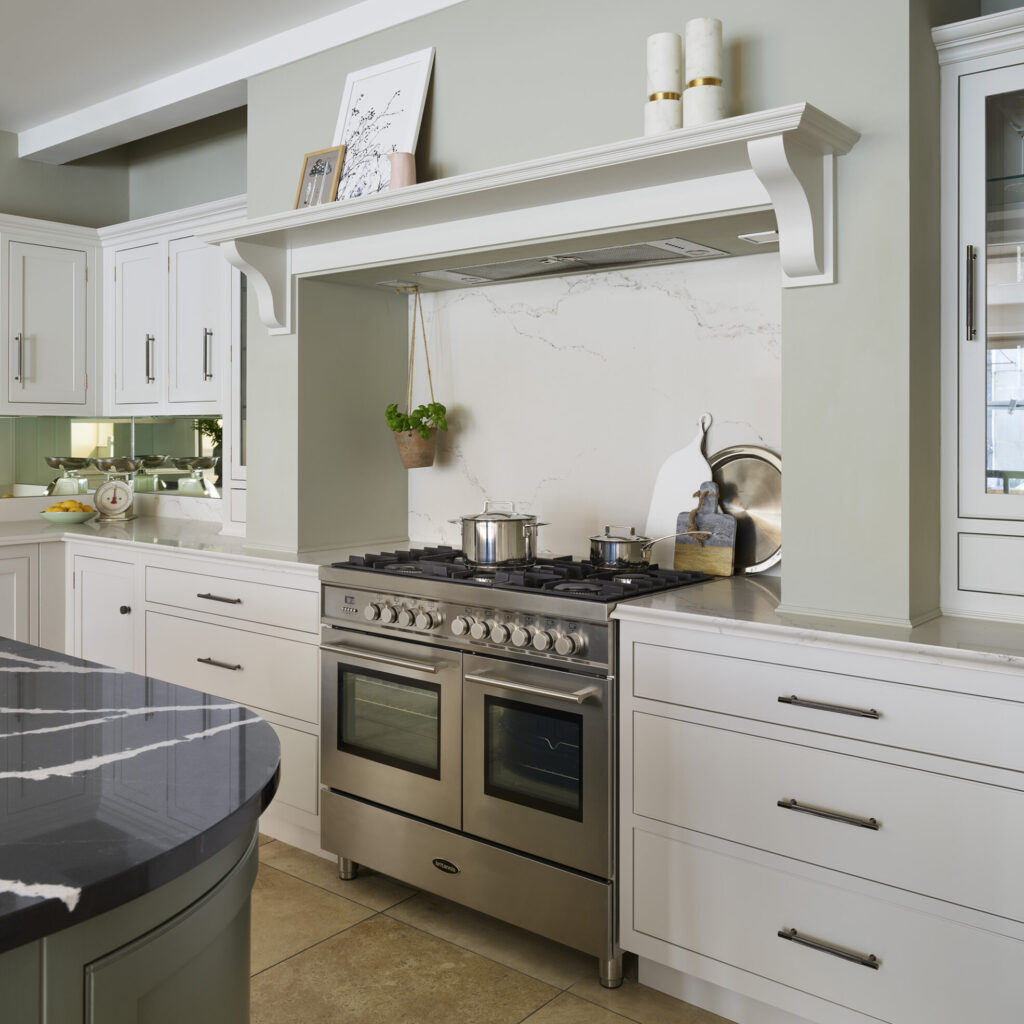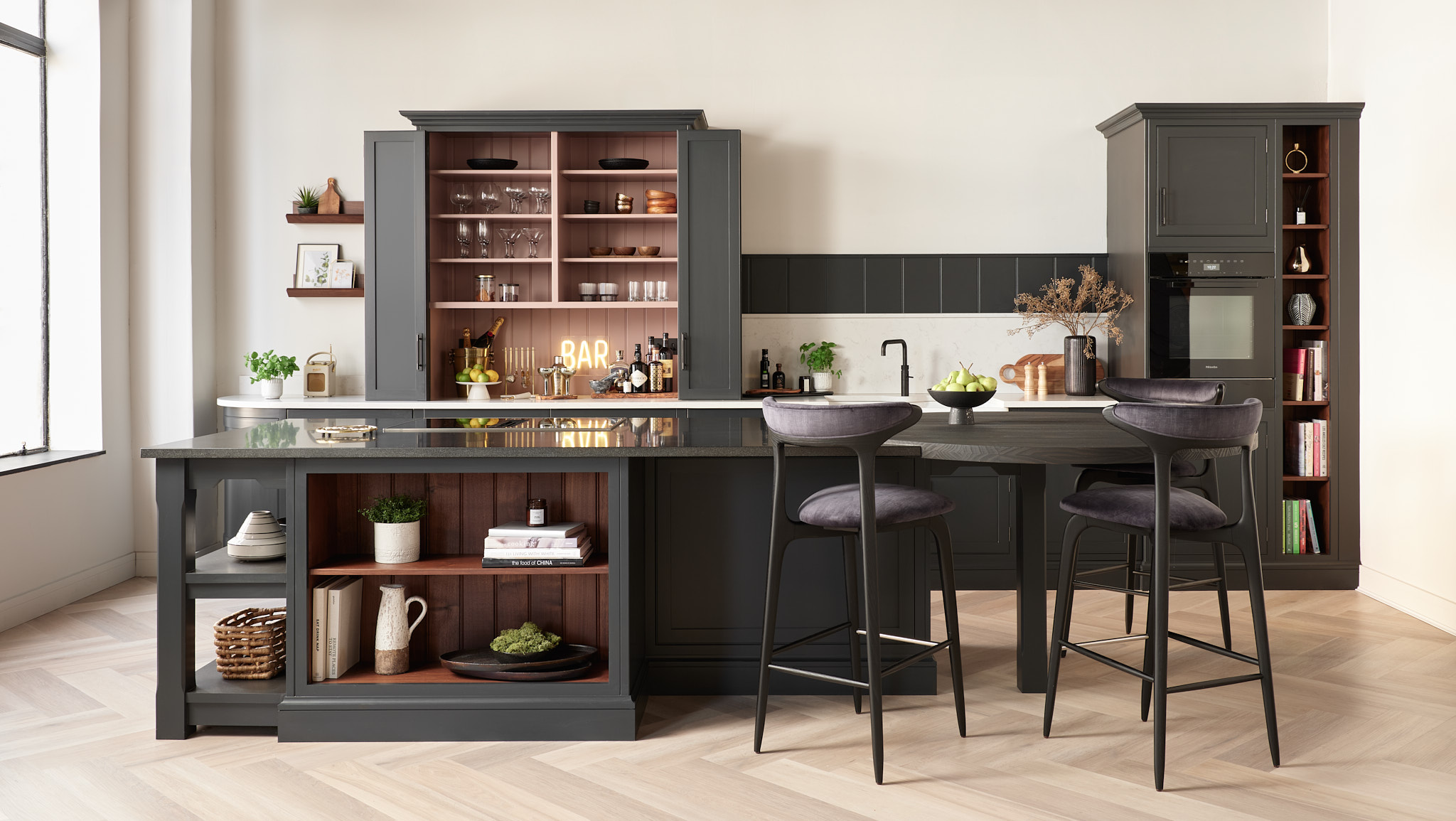
All interior design projects are bound to hit roadblocks at some point or another. There’s already lots to consider when planning your kitchen, but if your home has period features such as chimney breasts to work around, one of the first obstacles you’ll face is whether to hold onto or remove of them altogether.
This is an especially important consideration to make in the kitchen, which serves as the central hub of any busy family home. You’ll want to ensure that your space is functional, but it can be challenging to do so without sacrificing its unique character or undergoing complex structural work.
If you’re in need of some inspiration, here are some creative ways to plan a practical and stylish kitchen around chimney breasts.
1. Create a Focal Point
The chimney breast wall provides space to add a dose of design flair to your kitchen. There are countless aesthetic options to make a unique and attention-grabbing feature — such as wood panelling, tiling or statement wallpaper. Varying your materials can provide a tactile and visual contrast to the surrounding areas of the room, and you could even choose to match this element to another part of your design, such as a countertop backsplash
2. Build Bespoke Storage
One practical solution is to recess storage fittings into the cavity of the chimney breast. The structures may sometimes contain brickwork or obstructive flues, but many are left unfilled and only have a timber frame or plastered stud work covering them. This makes for an easier conversion into a bespoke storage space fitted with cabinets. In most homes, kitchen storage is very much at a premium — so any extra capacity for pots, pans or crockery is always good news.
3. Go Green
Houseplants introduce biophillic design to your space and foster a mood-lifting connection back to nature. By creating a small ‘green zone’ of plants around a chimney breast, you can add some colour and vitality to your kitchen without obstructing food preparation space. Naturally, you’ll want to make sure that enough light is reaching the chimney breast first — but if it’s bright enough, consider filling the space up with ferns, palms and flowers to bring the outside in.



4. Anchor the Dining Area
Basing your seating around the chimney breast is a neat way to centre a dining area in your kitchen. Whether you use a table or island, positioning this as a centrepiece attached to the protruding chimney breast will blend seamlessly into the surrounding space. This creates a communal area for the family as well as a convenient hosting spot for when guests visit.
5. Expose the Brickwork
To enhance an otherwise flat wall, many choose to partially or fully expose the brickwork. This can add a rustic edge to soften modern kitchens with chimney breasts. Brickwork provides an element of visual warmth and a contrast from the polish of popular kitchen design — like in this Shaker kitchen featuring an exposed wall.
6. Make an Entertainment Wall
If your kitchen space doubles as a dining or living area, chimney breasts make a great spot to place a TV. Ideally, however, the fireplace should be fully decommissioned and covered — as placing a screen above an exposed hearth may position it at an uncomfortable viewing height. TV sets can often be mounted directly onto the existing wall or sunk slightly back into the cavity, making space for cables, set-top boxes and game consoles behind the facade.
7. Install Shelving
If you need more storage space but don’t want to cut into a covered chimney breast, a simple solution is to mount shelves on the front wall or surrounding alcoves. This is an easy home DIY job that can add function to unused wall space, allowing you to stack books, speakers, decorations or other bits and pieces out of the way of the main kitchen thoroughfare.

8. Hang Artwork or Photos
Chimney breasts offer the space to personalise your kitchen with art or family photos. As these structures are usually central in the room, a big canvas or collage of smaller prints will help draw the eye. If your walls elsewhere in the kitchen are more neutral, this is a great spot to instil some colour and personality into your design.
9. Embed Your Cooker
Setting a cooker back into a chimney breast is another valuable use of the dead space occupied by the structure. To get the most out of this setup, you should plan to use the connected wall for worktops. This way, you can inset your cooker in the cavity and fit the overhead area with a cooker hood to create a flush wall for food preparation — making the chimney breast a practical design feature rather than an intrusion.
10. Light It Up
Add layers to your kitchen lighting configuration by installing additional fixtures around the chimney breast. Extra lighting options allow you to switch between functional task lighting and more ambient conditions. For example, you might choose to introduce fittings to the inside of the cavity, the front of the breast itself, or along the alcoves on either side to complement a hanging TV or any framed decor.
Why Are Chimney Breasts in Some Kitchens?
Chimney breasts are often found in period homes, adding a unique character that reflects the history and architecture of the building. These structures are remnants of older heating systems, showcasing craftsmanship from a bygone era. Retaining chimney breasts can enhance the charm of your kitchen, blending historical features with modern design.
Does a Kitchen Chimney Really Work?
Whether a kitchen chimney functions effectively can vary significantly from one kitchen to another. Some original chimneys may still work well to draw smoke and odours away, while others may require professional inspection and maintenance to ensure they operate properly. Assessing the condition and functionality of your chimney is vital when planning your kitchen design.
Is a Kitchen Chimney Better Than an Exhaust Fan?
When comparing a kitchen chimney to an exhaust fan, there are several factors to consider. In terms of aesthetics, a kitchen chimney can serve as a stylish focal point, seamlessly integrating into the overall design of your space. Many homeowners even choose to adapt their original chimney breast to cleverly hide their extractor, maintaining the period charm of the room while adding modern functionality. On the other hand, exhaust fans are more utilitarian and, while practical, lack the visual appeal that a chimney can provide.
Functionality is another key consideration. Kitchen chimneys are particularly effective at removing smoke, steam, and odours, especially in kitchens where gas cooking is predominant. In larger or more open kitchens, chimneys tend to work better than exhaust fans, which may struggle to handle the same volume of air. However, exhaust fans are still an efficient option for smaller kitchens and are often more straightforward to install.
Speaking of installation, chimneys typically require more complex fitting and regular maintenance, especially if they’re being retrofitted into a period feature like an original chimney breast. In contrast, exhaust fans are simpler to install and maintain, but they don’t offer the same character or design versatility as a chimney. Ultimately, both options have their merits, and your choice will depend on your kitchen’s design, size, and ventilation needs.
With a little creativity, a chimney breast can be a real asset to your dream kitchen design. You can avoid expensive and time-consuming structural work by incorporating them into your plans and improving both their function and form. To chat with one of our showroom colleagues about your kitchen design needs, request an appointment or pay us a visit at one of our showrooms today






